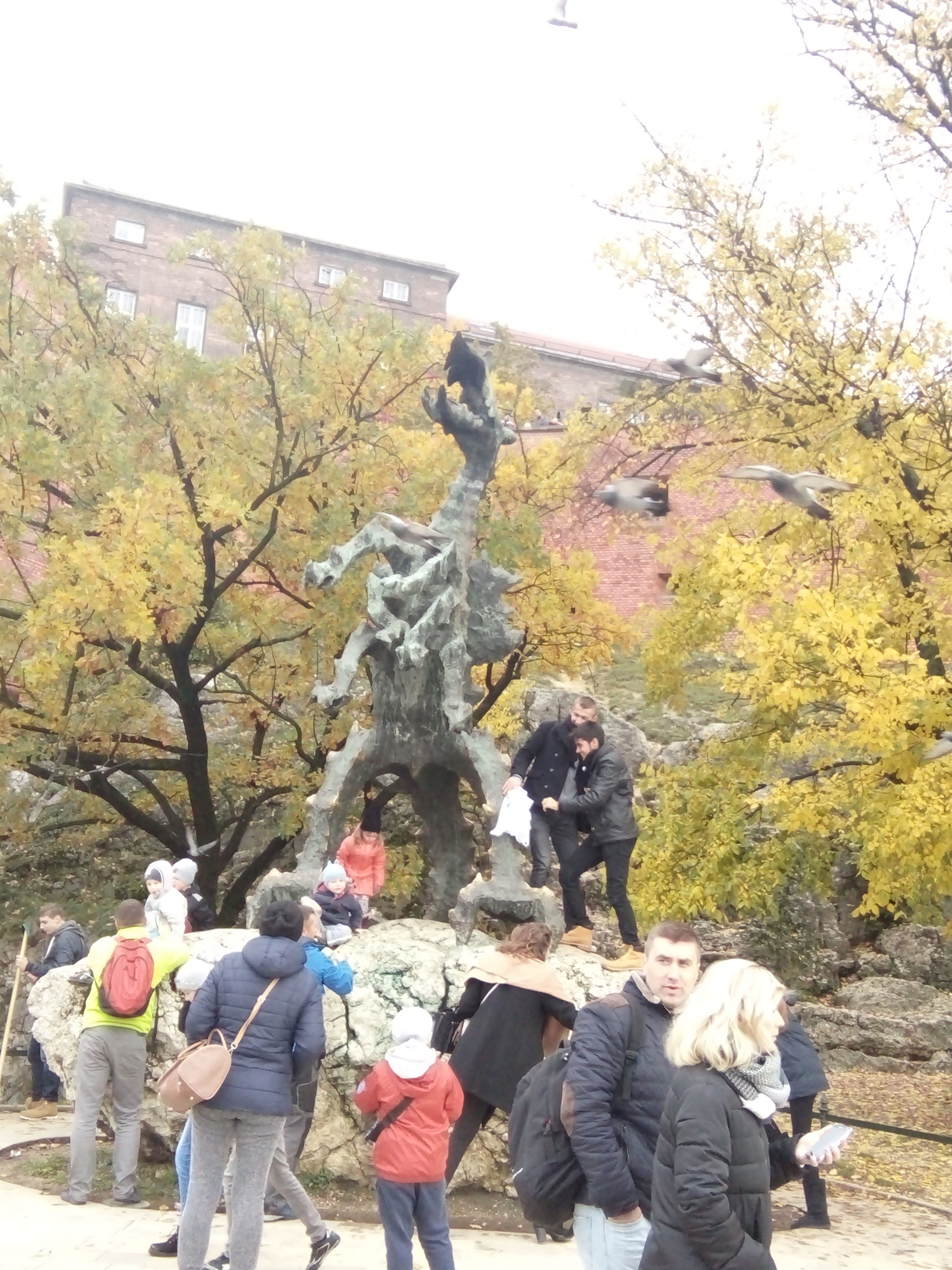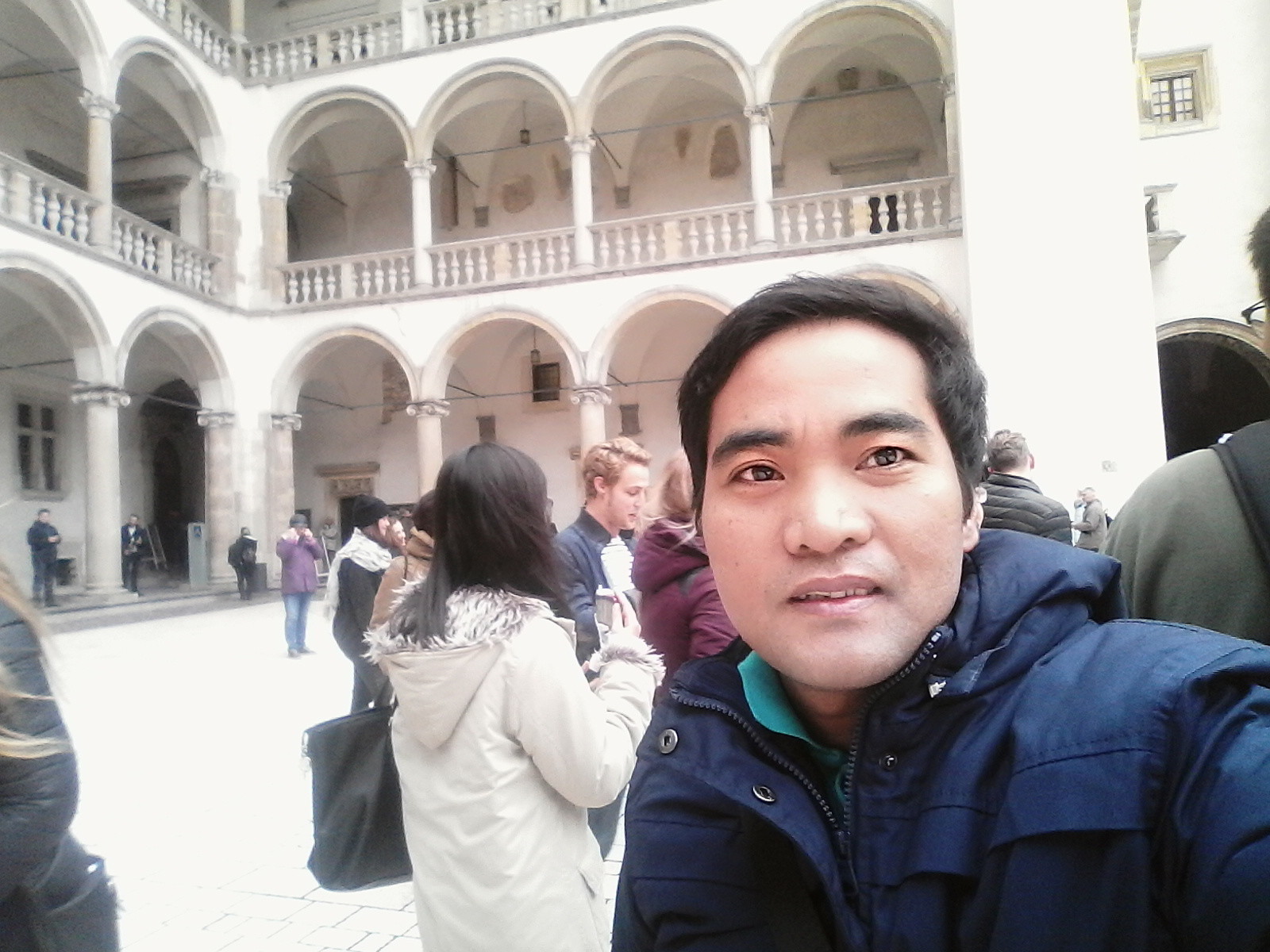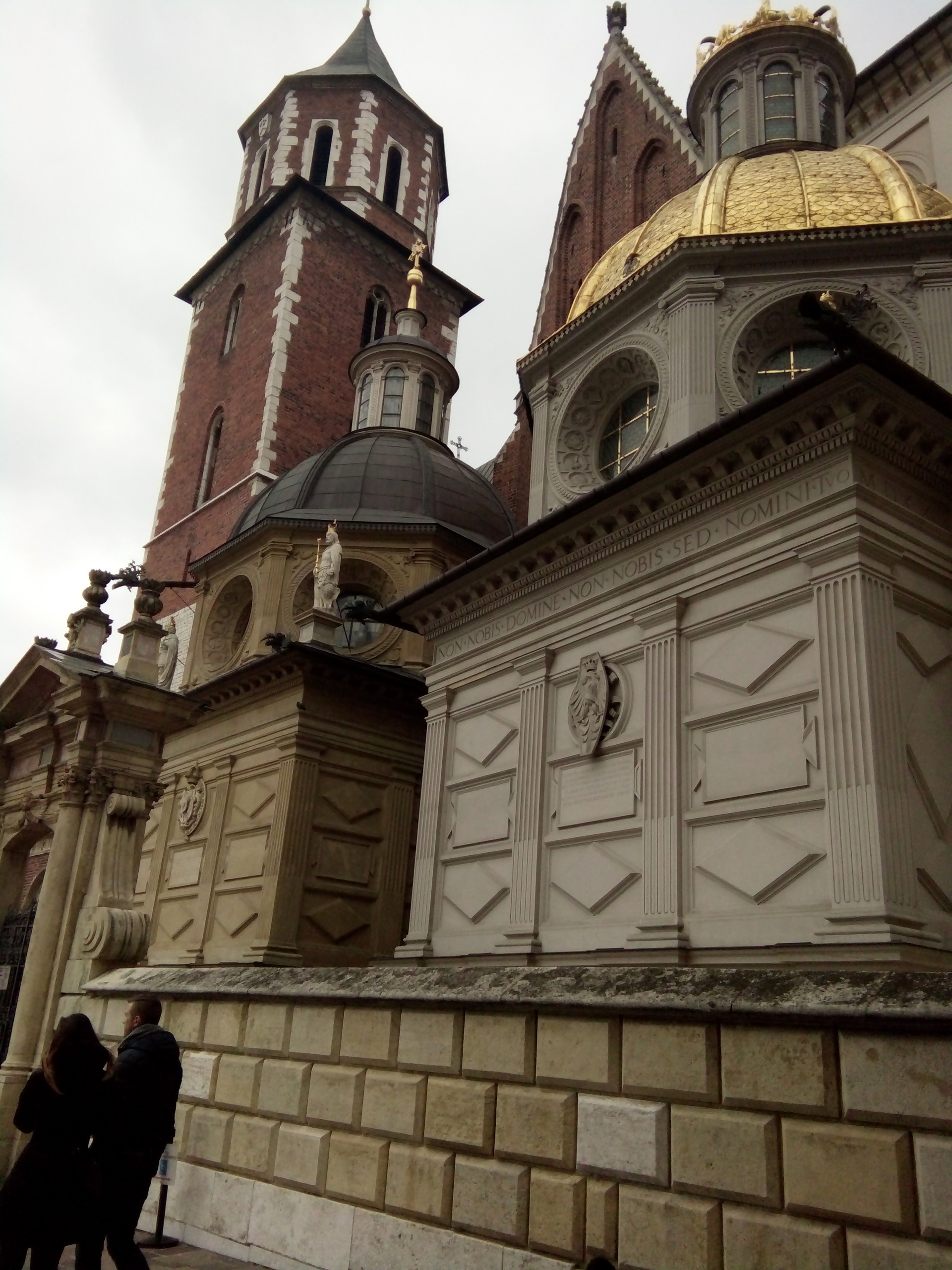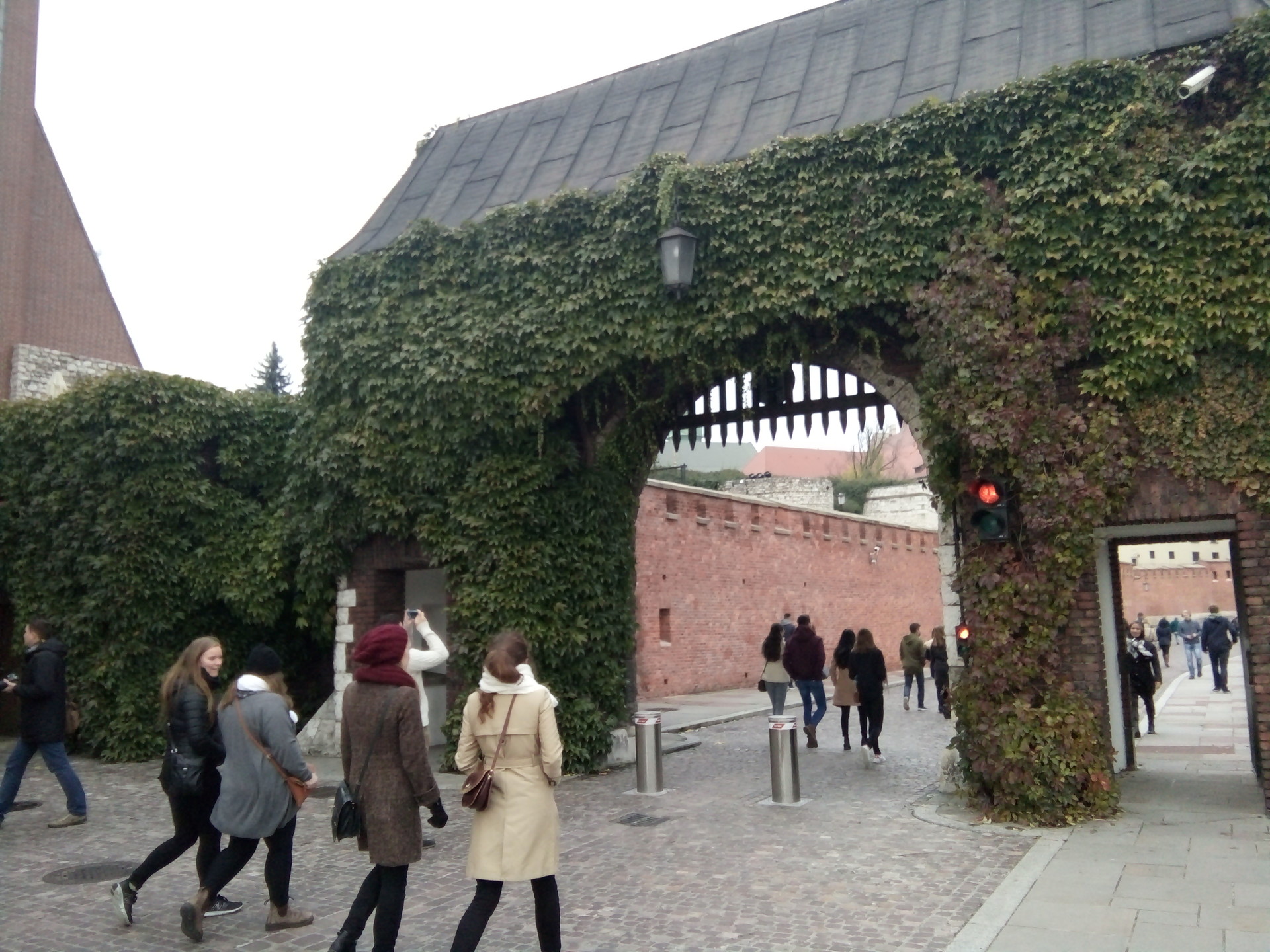The Krakow adventure: The Wawel castle and cathedral (part 3)
One of the best highlights of my trip in Krakow, Poland was my visit to Wawel Castle. It proves to be one unforgettable thing that makes Poland dear to my heart. It has been almost a year when I visited Krakow, Poland in an Erasmus-organized trip but the memories of this trip remained indelible to my mind. It left an impression which until today formed part of my travel memoirs that are forever stored in my consciousness.
They say that castles are the reminders and remainders of history’s glorious past. The Wawel castle in Krakow, Poland is no exception to this. When the group of Erasmus students from Budapest decided to explore the castle on our second day in Krakow, our destination is in Wawel castle. We have a tour guide who helped us navigate the route going to the castle. With just around a hundred meters from the foot of the castle, I can already see the entirety of the elegant structure. I know that this structure is one built in antiquity. As I trod on the path uphill which is of cobbledstone, I felt as though I was going back in time. Once I set foot on the cobbledstone street, I can see myself walking down the Medieval Period where kings and princes, the nobles and the warriors were all clad to elegance.
I know no legend. But the Wawel castle reminds me of the legends that were sung in untold number of years through oral tradition. Truly what total milieu the castle has makes one think of the legends that were the warp and woof of stories told and retold a thousand times during nights of gathering among old folks. Legends have their own materials that make them unique from legends in other places. Legends of Krakow, Poland share a lot of similarities with other nations of the world. But its materials are unique of Krakow itself.
Of the legend of the dragon
One of the best-told tales that captured the imagination of a great number of people, both locals and non-locals alike is the tale of a dragon that was said to have terrorized the city. Legend has it that this dragon has caused so much havoc to the inhabitants of the city that they begin to panic. People from all over the city were in quandary on how to deal with the dilemma posed by the dragon. As each day passes by, they were all in fear on how to avoid the dragon from slaying them. Krakus, the ruler during that time was in deep problem thinking on some ways on how to defeat the dragon. Several attempts have been made already to vanquish the dragon but were in vain. It appeared that the dragon knew how to spell terror to the city and consume them even before slaying them with fire. The dragon lives in the hillside of the cave and the vociferous noise it produces every time it roars cause so much fear to the inhabitants of the city. Then the time has come to put an end to the struggles of the people and place all doubts to its rightful end.
The dragon finally met its match: a down-to earth shoemaker whose brilliance was renowned from all over the city. The shoemaker was said to have devised a scheme that will trick the dragon. Just like Odysseus in the Greek mythology who slain the one-eyed titan with tricks, the old wise shoemaker has its own version of Athena’s wisdom. He deceived the dragon by baiting a sheep. The dragon was fooled into the stratagem that he approached the bait free of any suspicion, fully free of care that there is no deceit employed. The dragon ferociously devoured the sheep unaware of the impending disaster that would ensue. The shoemaker, clever as he was, stuffed his bait with sulphur, a substance which every dragon is familiar with. Once the dragon has devoured the sheep, he slowly felt the pangs of an unknown element inside his stomach. Not until after a while did he felt its constitution slowing down. He thirst and rushed into a river (could have been the Wisla river) and drank. The dragon burst and exploded in the air.
The legend of the dragon sounds very similar to most of the legends that I have already read by far so much so that I can easily compare it with such legend in the Nordic region or with the Sphinx in the Greek mythology which after causing much terror to the people has been finally conquered by a wise person.
The Poles built a statue of the dragon situated at the foot of Wawel hil to remind people of century old tales of the dragon that captures their imagination through time. Now it is a source of amusement for crowds who pay visit to the dragon every time the statue spells out fire.

The Wawel cathedral
After hearing much of the legend, we started to explore the interiors of the compound where the cathedral and the castle are found. The Wawel cathedral is no doubt a sight worthy of multiple glances. It is like a beauty that could launch a thousand ships as Homer describes the most beautiful woman in the world in the Greek mythology. So what is there to see in the cathedral? In all actualities, when you get to the castle, you should bear in mind that you should treat your visit there as though it were a spiritual journey for the cathedral is undeniably a site of spirituality itself for a good number of reasons.

Firstly, the cathedral has at least eighteen chapels which signify the pagan era upon which they were built. These chapels reflect the heritage and tradition of the time they were built. Hence, the cathedral is a historical treat for visitors as the structural features of the cathedral has lots to tell about the period when these chapels were built. If cathedral is said to be the religious site for worship, indeed it is. It is also the site for the tombstones of kings of Poland. So it goes without saying then that I was standing in the very spot where the nobilities of the country were buried. I had under my foot a great number of Poles who died and a thousand tales of history bundled together in this sacred site.

Much has been heard about the cathedral being the sacred site where kings and powerful men of Poland were laid to their final resting place. The chapels inside the cathedral are actually the living proofs that indeed the once great men and women in Polish history were embraced in the warm embrace of the soil where the cathedral is seated.
The cathedral as a whole reflects the Gothic architecture as evidenced by the columns, the pillars, etc. You would be able to easily discern the “gothicness” element that dominates the entire structure if I may use the word. But if you are to look at the chapels that were built inside the cathedral, they were representatives of different artistic schools. I may not be an art connoisseur but you would surely catch the striking semblances of different designs that pervade the chapels.
One of the most important feature of the cathedral is Sigismund chapel which I believe really caught my interest. The very dome which is said to be golden is the pearl of the cathedral. It can be considered as a classic reflection of the Renaissance art which in every inch is worthy of admiration. The Sigismund chapel exudes an unusual atmosphere of tranquility and peacefulness. It was in Sigismund chapel where I silently prayed what I wanted to accomplish in the next two years. It is in this place where I can be with myself and have a peaceful communion with the Divine Providence.
The Sigismund bell
What caught my attention with particularity was the huge bell up a tower. The tour guide told us that if we want to reach the summit, we needed to traverse at least around seventy (70) steps. So we dared to take the challenge. Truth to tell, I really did not have that much physical activities in the last few months so I was really tired once I reached the top. I needed a few minutes as I was gassing up so I momentarily paused and took rest. Tired as I was, the view at the top is worth the effort that I did climbing the tower. Breathtaking and really stunning, the top view offers a very scenic perspective of the city. It is really refreshing to be there. You can almost feel the entire atmosphere of the city. You would feel the touristy atmosphere at the top as there are crowds waiting for their turn to take pictures of the panoramic view of Krakow.
But the cream of the top, so to say is the gigantic Sigismund Bell which is regarded by many as the most significant historical bell in Poland for certain reasons. Firstly, this bell is symbolic of the different historical and momentous events in Polish history. This bell is a living witness of the various periods of turbulence through which Poland underwent. The Sigismund bell is so huge that it would take a Hercules to ring the bell and perhaps an Atlas to carry the bell to one’s shoulders.
It would take several men to pull the strings and ring the bell. That’s how colossal this looks like. In fact, the bell is rarely rung. It is only used for very few important occasions in Poland. As I was looking at the bell, it reminded me of the Balanggiga bells which the Philippine government has been requesting the United States to return to the Philippines as it was a historical memento of the Philippine-American War. The Sigismund bell which is considered as among the largest and the most significant historical artifacts in the country, is witness to different historical periods to Polish history. So to whom the bell tolls? The bell tolls only to commemorate important celebrations of the Roman Catholic Church and to celebrate important state’s occasion.
Saint Stanislav mausoleum
As I tried to explore the cathedral, I chanced upon the Saint Stanislav Mausoleum which houses various religious artifacts and relics. Two important figures in Poland were buried in this mausoleum and history tied the fate of these two men in a singular time. One represents the political realm and the other represents the religious domain. The former refers to Poland’s king, King Boleslaw II the Bold and the latter pertains to Poland’s bishop in Krakow, Saint Stanislav. It was an interesting experience for me to learn that I was actually sharing a precious time with thousand other people who would like to experience this historical and religious journey within Poland.
Truth to tell, I knew nothing about Saint Stanislav until I was told by a friend from Poland that the mausoleum was actually named after one of Poland’s greatest men: Stanislav. According to stories, Stanislav was born of nobility. Because of the injustices and cruelties of King Boleslaw, the pious Bishop excommunicated the king. In retaliation, the king was said to have murdered the bishop himself inside the cathedral. It was a fateful day when the bishop was killed. From that time on, that very day when the bishop was infamously murdered by the king was commemorated as the day of Saint Stanislav.

In my next post, I shall bring you the second half of my personal narratives about the Wawel castle and cathedral. It was a unique experience worthy of being shared. See you folks in the second part of the series of my travel experiences in Poland.
Photo gallery
Want to have your own Erasmus blog?
If you are experiencing living abroad, you're an avid traveller or want to promote the city where you live... create your own blog and share your adventures!
I want to create my Erasmus blog! →



















Comments (0 comments)